Honestly, I like to sleep. But being an office plankton for obvious reasons, I can’t always afford it whenever I would like to. Vigor is not enough. Already by three o’clock I usually am in some strange state, going home is like an autopilot, and by 9 o’clock I’m practically useless (although the question is rhetorical - am I useful until this time?)
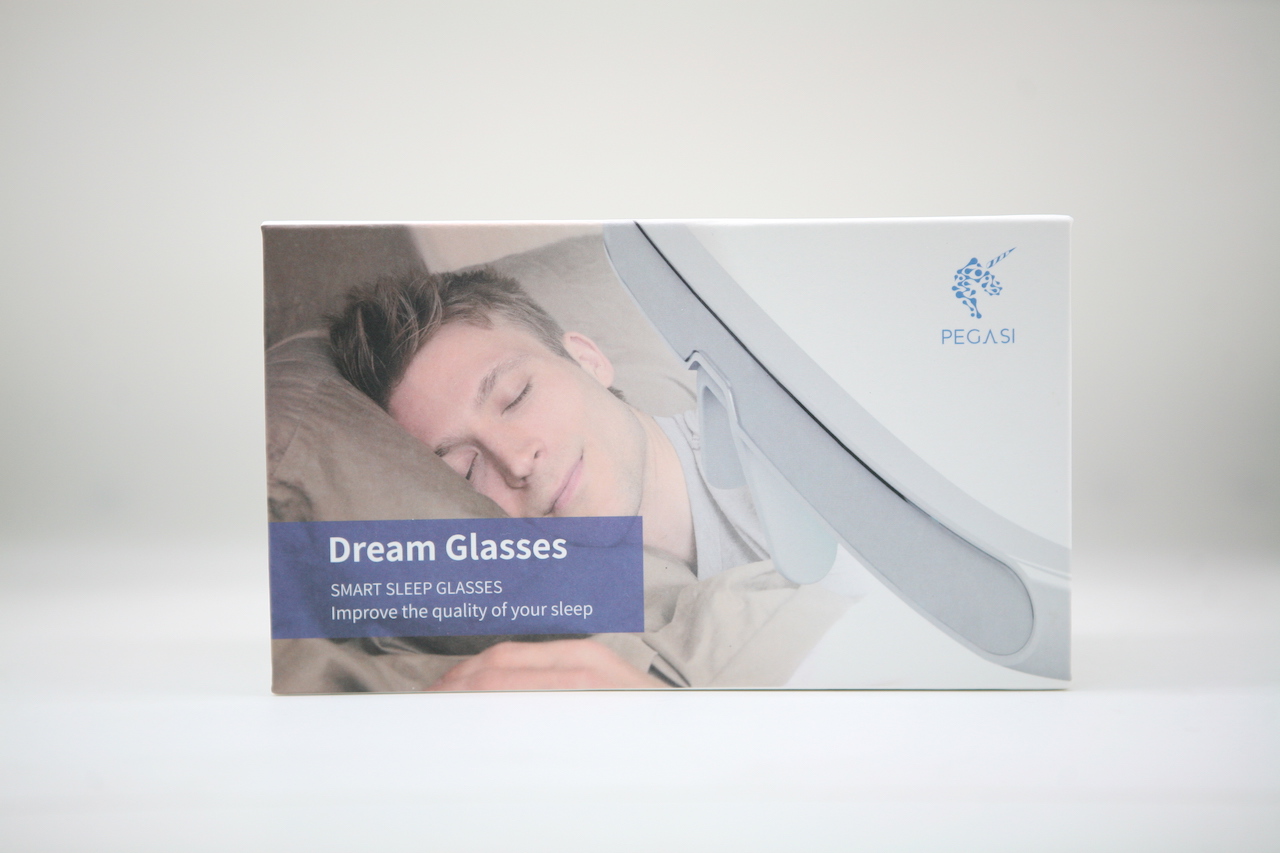
And in the catalog came across a novelty - Pegasi - glasses that shine in the eyes in the morning.
I would like to start with personal feelings and impressions. The essence of the device is simple: they shine in your eyes, suppressing melatonin, and you kind of should become more cheerful.
It is curious whether this is the power of self-hypnosis, but for a few days, in a series of my vigor, I really had enough for a full day and evening, and I did not want to lay my head on the table or lean against the window in the minibus either at work or on the way home.
It was curious to wait for the weekend: usually I always have a ritual quiet hour. However, last Saturday after the morning session with glasses I couldn’t sleep for some reason, but on Sunday, when I did not use glasses, I was knocked out at the usual time.
In general, as it seemed to me, this thing works approximately as they say about it: they say that you will be awake when it is necessary, and normally fall asleep when it is supposed to.
What it isThe project itself comes from
Kickstarter , and is based on knowledge of
light therapy .
The effectiveness of exposure to light has been proven, in particular, in seasonal affective disorders, and is also part of the measures in the treatment of "late falling asleep syndrome." Roughly speaking, the Pegasi team packaged a long-known practice into a new form, which in its essence is not much different from what if you had a bright lamp shining in your eyes.
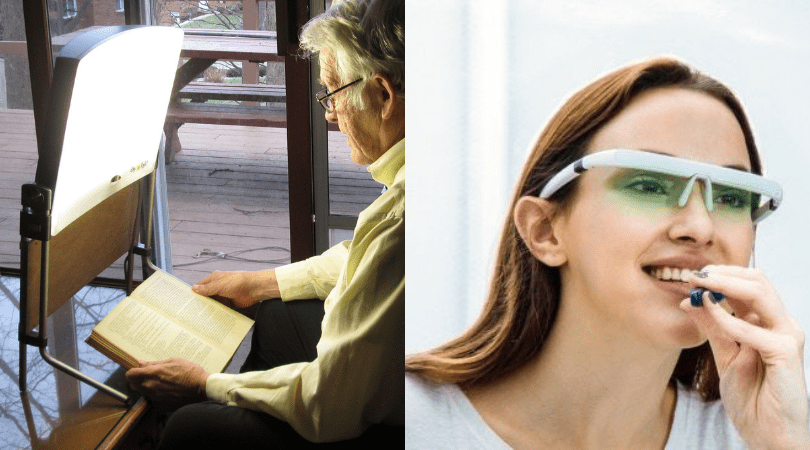
The form really turned out to be convenient: in the mornings it is a pity to spend time sitting in front of the lamp on. And, wearing glasses, you can safely continue to do their usual business. Why in the morning? According to official sources, the optimal time for using glasses is from 7 to 9 in the morning, according to the "biological clock" of a healthy person.
The device uses green light with a specific wavelength, which optimizes the functioning of the nervous system and inhibits the secretion of melatonin due to stimulation of the suprachiasmal nucleus. Similar inhibition continues even after the cessation of the light signal and can last for several hours, which will help the patient stay awake in the daytime. According to the "biological clock" of most people, it is best to use Pegasi Smart Sleep Glasses II from 7 to 9 in the morning. At the end of the day, the inhibitory effect of “smart glasses” will disappear and there will be a release of melatonin, which will contribute to rapid falling asleep. Source

In simple terms: the light emitted by the glasses regulates or inhibits melatonin. Actually, numerous light alarms are also partly based on the same idea, which are designed to provide a comfortable awakening.
Melatonin, or sleep hormone, is suppressed during a half-hour session, and its secretion is restored exactly in the late afternoon: everything is won. At the right time, a person is awake, and by the end of the day he calmly and on time goes to bed. In fact, we take the amount of light we need for normal functioning under our own control.
To all fault, of course, evolution. For millions of years, a person got up with the first rays of the sun and went to bed with the onset of darkness. I observe a similar thing (due to energy savings) in the village: even daughters grannies cheerfully shovel with dawn, but with the first signs of sunset - everything seems to die out.
The city cycle is somewhat different: somewhere it stayed too long, somewhere it got up too early, and as a result, daylight hours were artificially reduced. This gap and make up for Pegasi. On the whole, as I have already said, my modest experience of use is quite satisfactory, it seemed to me especially clearly now, in the autumn "depressive" season.
Science and nothing moreBefore sharing information about these glasses, I briefly looked through the materials, articles, scientific publications that are referenced in various reviews.
It is worth noting that all the cited quotes and data look scientific, and at this stage of dating, the gadget is already credible. One of the last, as I understand it, just partially explains why the classic "blue" light in Pegasi was replaced by green.
We are talking about newly discovered
cells that are not associated with vision, but act as an “internal synchronizer” of circadian rhythms. The impact of green color of a certain wavelength is equally effective, as well as the effect of blue, which was previously considered the "reference".
Other
material is devoted to the same. Moreover, a curious comment is given here, according to which the effect of green light disappears faster than from blue, which, in general, was necessary: quickly woke up - fell asleep in time.
Speaking very strictly, the problems of sleep, sleep and wakefulness cycles, began to interest mankind much earlier than it is customary to think. According to an
article in Nizhny Novgorod, as early as 1632, the first scientific descriptions of some processes appeared, which, although they have mythical terminology, can already be correlated with what will be called “circadian rhythms” in the future.
This is all I need: having tried it in practice and felt some positive effect, I suddenly thought about how safe it is. My modest search led me to the conclusion that the method on which Pegasi is based has a scientific basis, clinical application and a wikipedia article, which generally insures me against risks.
What does it look likePegasi have the name "Smart Glasses", and in general, probably, this is true. The only thing missing here is the lens. In everything else in form - it really resembles glasses.
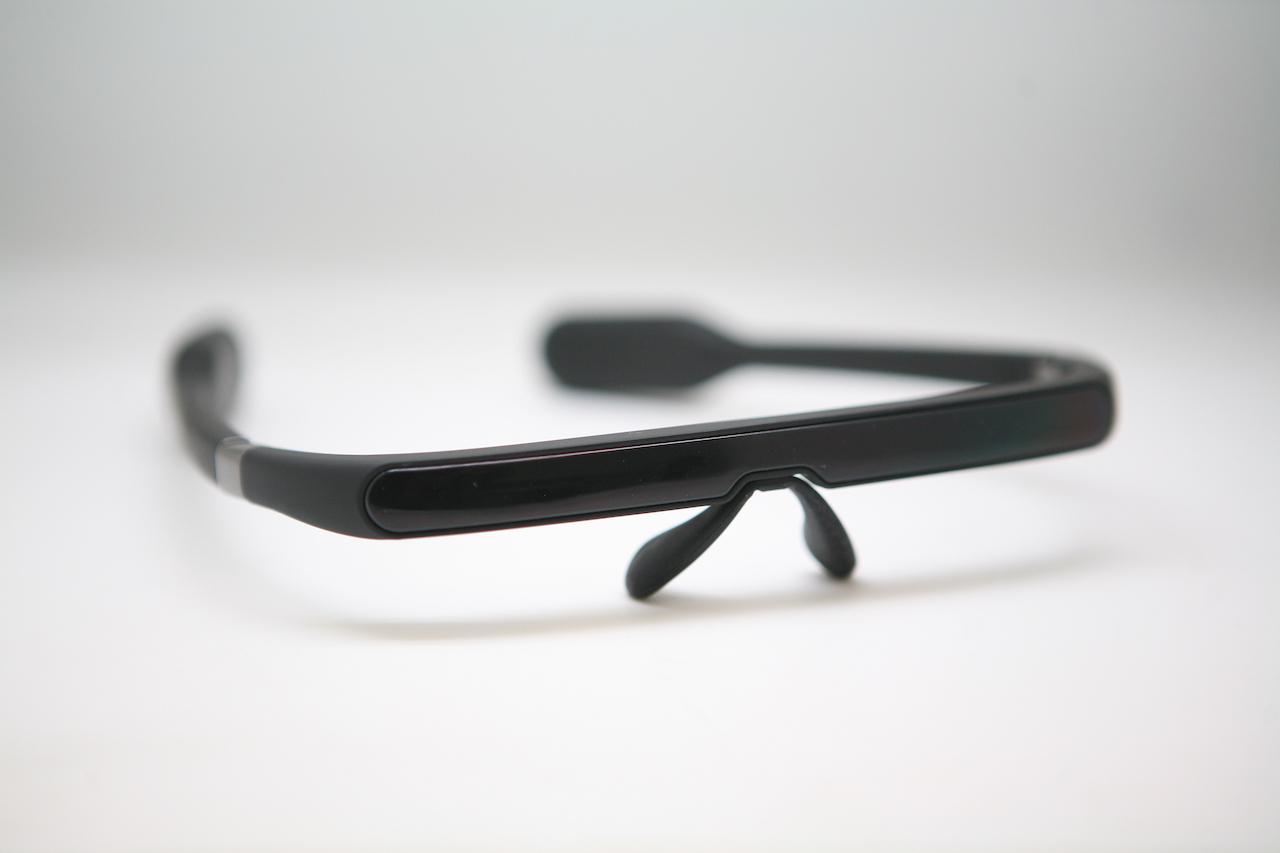
Despite the fact that the device has an application: it is nevertheless smart, in my opinion, it has no value.
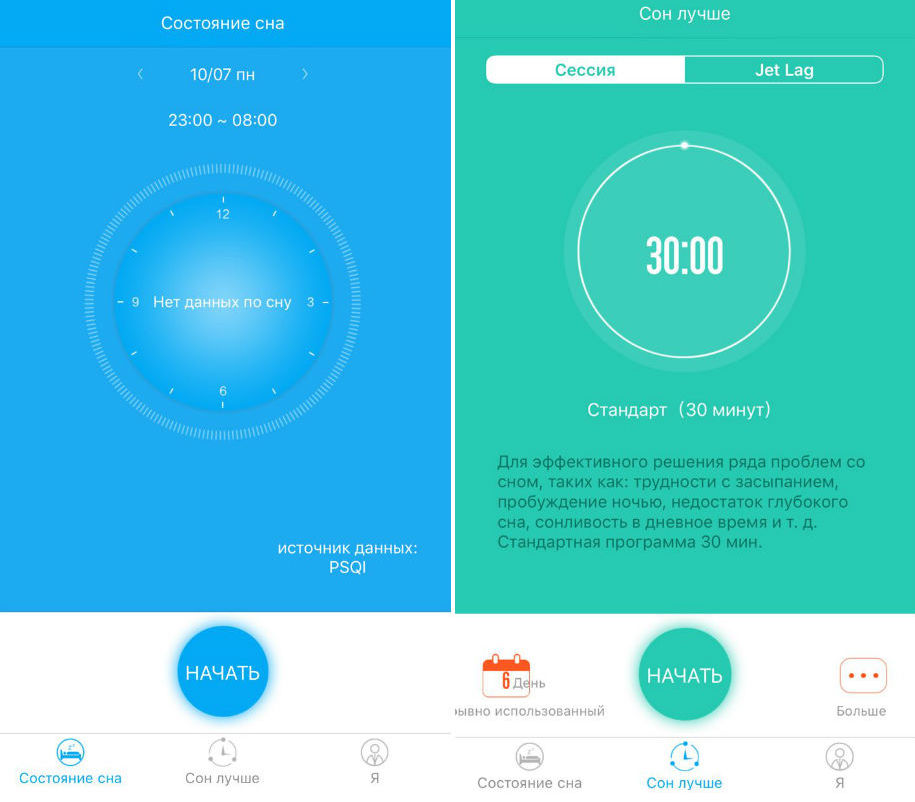
There are two main sections: the first is something like a sleep tracker from a smartphone, which is activated manually. The second is glasses management. Change of regimen between therapy and JetLag, setting duration.
In my use mode, for example, control from the button on the glasses themselves would be quite enough: on / off.
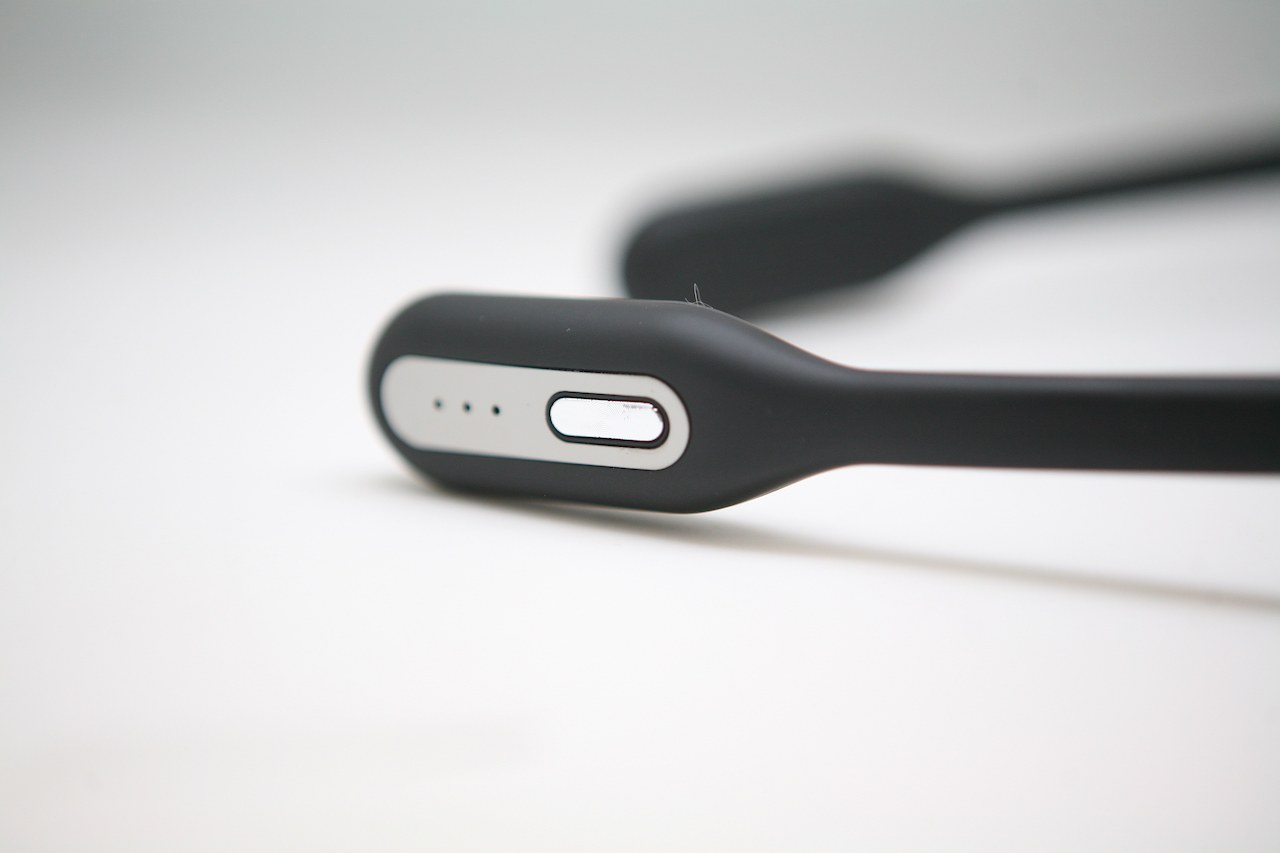
Visually, they seem to seem a little big, but the glasses are lightweight, they are quite comfortable to wear, plus you can do ordinary things in parallel: dress, drink coffee, sit at the computer. The only thing where it’s not very convenient is in the dark. The light does not hit the eyes very much, but if you are looking for something in a dark closet, the same pair of socks, then it blinds.
 Competitors
CompetitorsThe glasses are simple and clear, and their principle of operation is not intricate, while it is based on very specific discoveries and clinical practices. So, of course, there are competitors.
Moreover, both in the form of glasses and in the form of special lamps for home use. I will not give everyone from memory, but there is, for example, Luminette. They are distinguished by a slightly more bulky form and a less "neat" design.
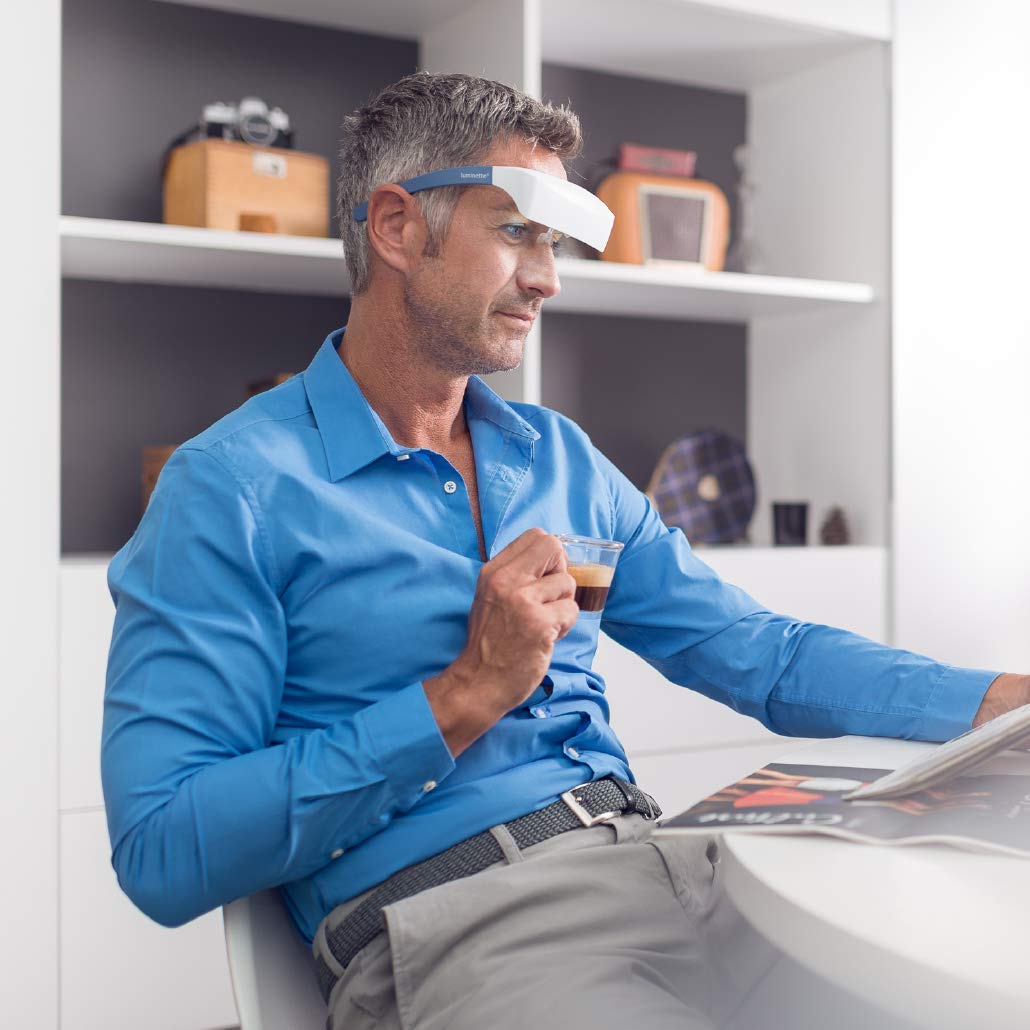
Also, at one time I tried the AYO project. Unlike Pegasi, the therapy was carried out in blue light.
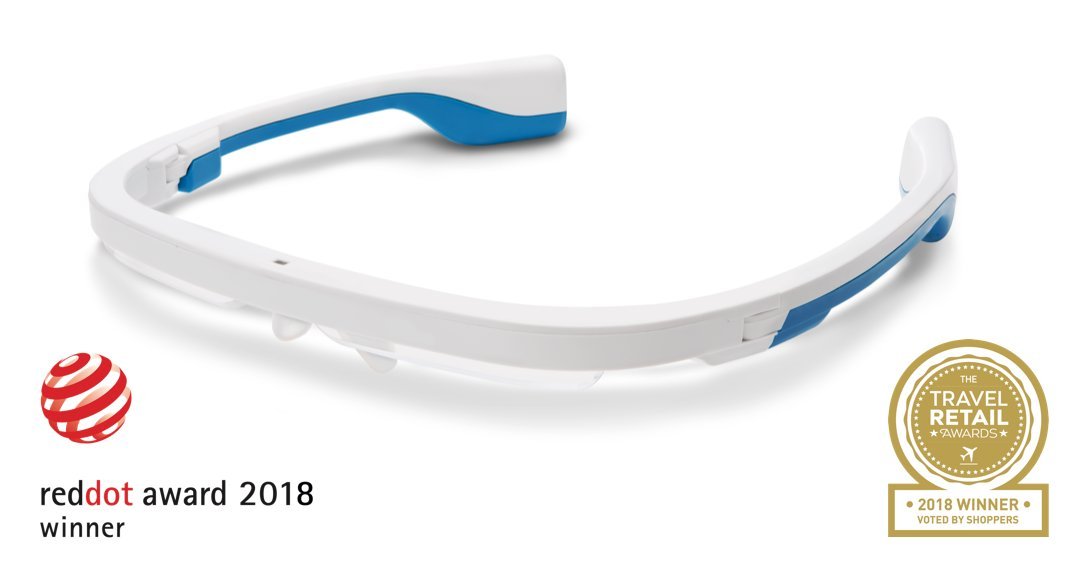
And there was a suspiciously similar
project to AYO - Timer Plus. The experience with AYO was small, at the level of unpacking and fitting. I can not say anything positive or negative about them.
My resultsPegasi is a very simple and intuitive device designed to solve sleep problems. The work is based on clinically proven methods of sleep correction, adjusted for scientific discoveries of the last decade. I managed to feel some changes for the better from the first days of application, and it seemed to me that this intelligently works.
With long-term therapy, manufacturers promise a lot of positive effects, for example, a completely restored correct sleep and wake cycle, which, as a result, should provide a reduction in stress, restoration of the nervous system, increased performance and other positive changes.
It was enough for me not to "nod" in the interval between an hour or two and five to six in the evening, calmly and cheerfully get home. Today, for example, in the morning I did not use glasses, and by this time I already feel different, there are signs of fatigue and a desire to take a nap.